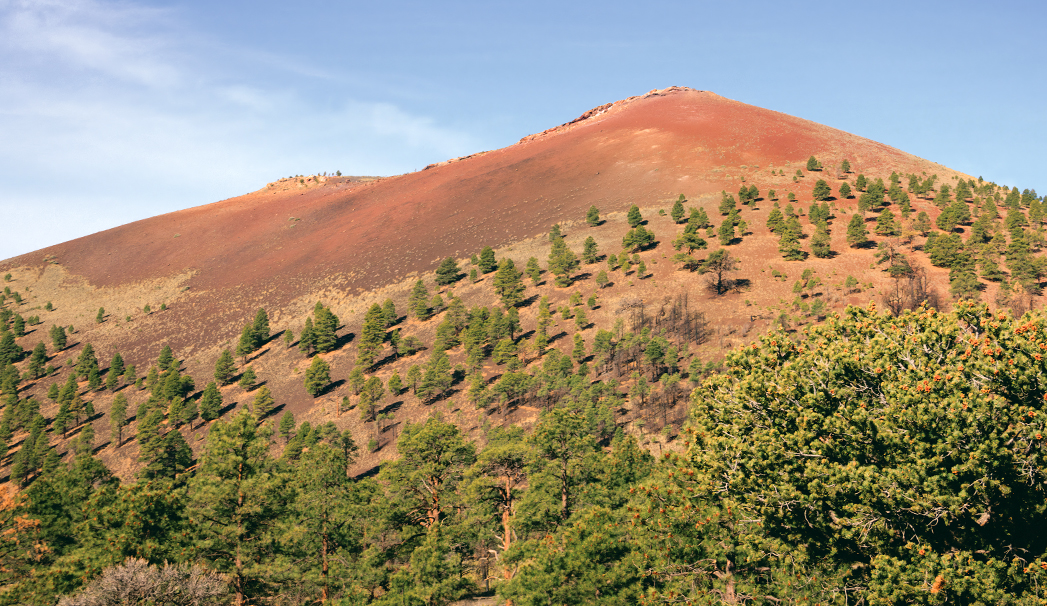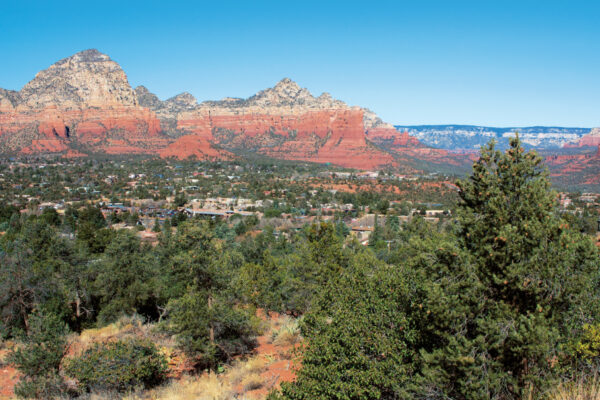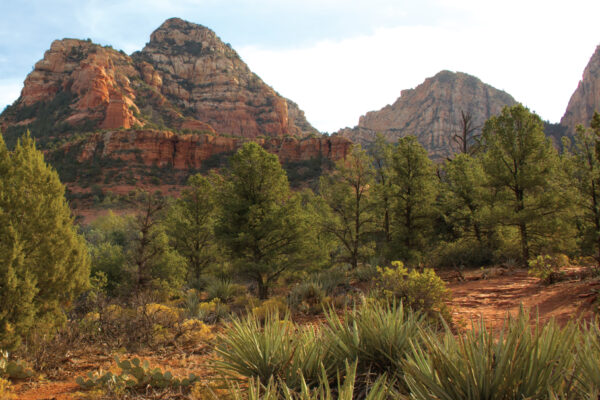Visiting Sunset Crater Volcano National Monument in Flagstaff in the summer is a great way to cool off and an even better way to check out a historic, scenic monument. We visited this spot last summer and would return to admire the scenery. Before you even reach the gated entrance by the visitor center, be sure to take a moment to admire the stunning mountain views that are located just off US-89 in Bonito Park. Typically during the summer monsoon season, the colorful wildflowers will be in bloom. After paying admission at the gate, you’ll drive to Sunset Crater. Sunset Crater is a volcano that erupted back in 1085 A.D. Back in the 1920s, H.S. Colton wanted to preserve the mountain in its current state to stop a Hollywood movie company from blowing it up to simulate an eruption, according to the United States Geological Survey. Today, you can see the missing top of the volcano that dominates the skyline.
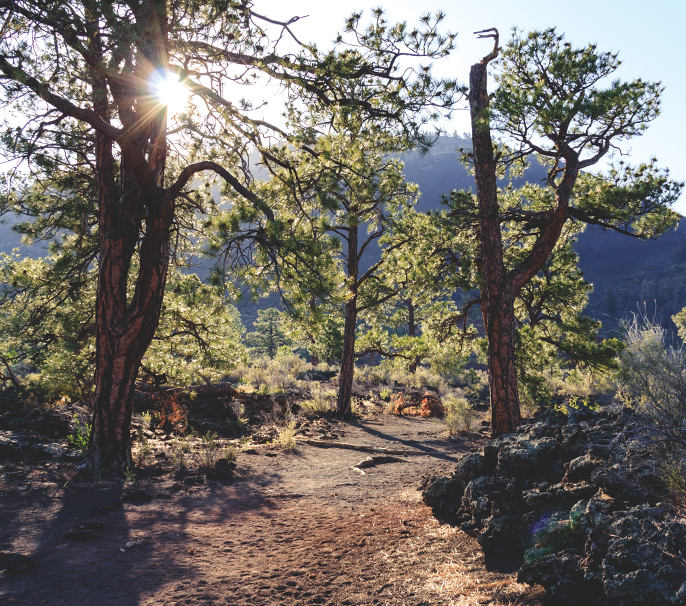
The sun streams through Flagstaff’s Ponderosa pine trees and a lava flow is on the right. Sunset Crater National Monument offers a total of four hiking trails that are all relatively easy strolls and open to the public.
Sunset Crater visitors can’t hike in the backcountry since the land is protected. All the open hiking trails are paved or at least mostly flat, making for peaceful, easy strolls. We love how accessible these trails are. For instance, strollers, wheelchairs and pets are all welcome at the 1-mile long Lava Flow Loop Trail. The nearby 0.3-mile Bonito Vista Trail is true to its name and offers sweeping views of the Bonito Lava Trail. Cross the street to reach the A’a Trail to see even more expansive views of the Bonita Lava Flow. See if you can spot the plaque designating this monument as a National Register for Historic Places. Apollo 17 astronauts trained here before they visited to the moon largely due to the similarities in the landscape.
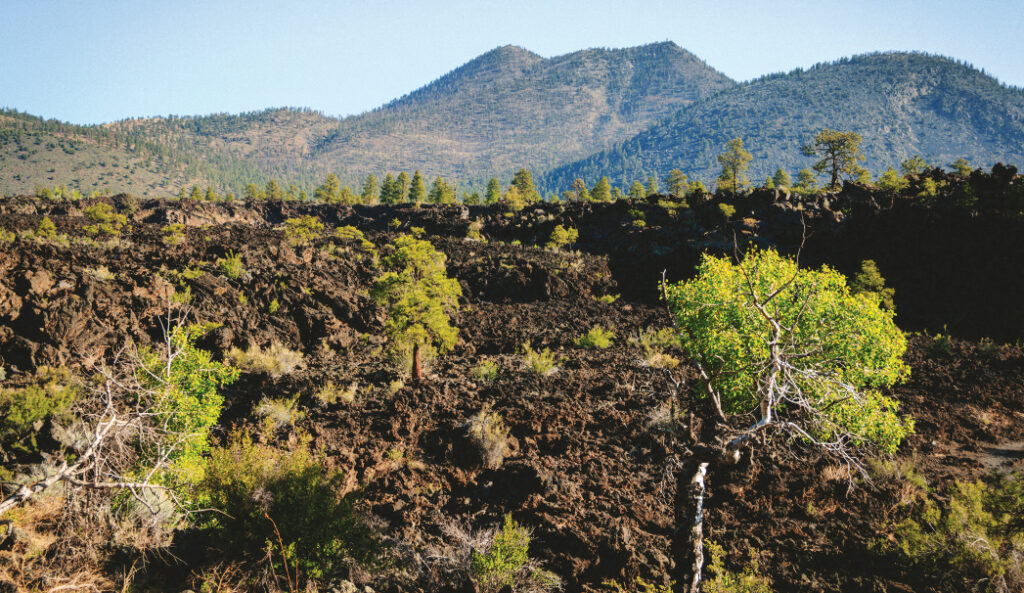
A scene from the A’a Trail at Sunset Crater in Flagstaff.
If you have time, try tackling the Lava’s Edge Trail. This 3.4-mile-long paved and pet-friendly (for 2 miles on the U.S. Forest Service portion of the trail) out-and-back trail goes back to the visitor center and serves up views of the cooled lava and expansive blue skies and trees throughout. The Lenox Crater Trail is closed as of press time due to damage sustained during the Tunnel Fire in 2022. Admire the Sunset Crater views coupled with lava flows. The lava flows look otherworldly. It’s as if someone took liquid asphalt and spread it on the ground like they were frosting a cake. When we were looking at the lava flows, we couldn’t help but think about how remarkable it is that the are still remnants from an event that happened hundreds of years ago. There’s another place nearby that will remind you of history. If you have time, driving 14.5 miles to Wuptaki Pueblo is worth it. This is the largest free-standing pueblo in Northern Arizona and a one-of-a-kind destination.
Please check with the Flagstaff Ranger District of Coconino National Forest before planning your hike. For more information visit: https://www.fs.usda.gov/recarea/coconino/recarea/?recid=70983

